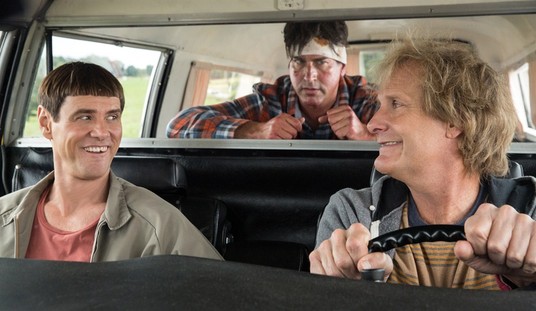This may be clickbait, but it's darn fine clickbait.
Imagine you're kayaking well within sight of land off the coast of Chile with your dad, and you suddenly notice the swells are going all cockeyed. The next thing you know, you're being swallowed whole by a humpback whale.
That scenario played out for Adrián Simancas, 24, who, for about three terrifying seconds, was literally in the belly of the beast.
Humpbacks are particularly curious about kayakers. This incident occurred about four years ago off the coast of California.
Needless to say, this is a thrill I'd rather not experience.
Humpbacks don't have teeth, which is a blessing for Mr. Samancas. They have baleen, a "keratin-based material that hangs from the upper jaws of baleen whales," which they use to strain hundreds of gallons of water at a time to get at krill (tiny shrimp) and even smaller zooplankton.
What did it feel like to be swallowed by a 30-ton humpback whale?
“I felt something hit me from behind — all this happened in a second — something dark blue or white enveloped me, and a slimy texture brushed my face,” Mr. Simancas said in an interview. “Then it closed completely and I started to sink, and I just closed my eyes, expecting an impact. But instead I felt as if I was surrounded by water. I realized that I was in something’s mouth and I had been eaten.”
After a second or so, he said, “I began to feel the life jacket pulling me up and then suddenly I was out again.”
His father, Dell, recorded the whole thing.
NEW: Kayaker gets “eaten” and spit out by a humpback whale off the coast of Chile.
— Collin Rugg (@CollinRugg) February 14, 2025
"Stay calm, stay calm," the man's father could be heard saying in the video.
The man, Adrián Simancas, says he thought the whale had swallowed him.
"When I came up and started floating, I was… pic.twitter.com/tu8FWuplIx
“I turned the camera on to record the waves, and I heard a very loud sound behind me like a big wave breaking,” Dell Simancas recalled. “I turned around and couldn’t see Adrián or the boat anywhere. Suddenly I saw him emerge from the water along with what looked like an animal.”
Mr. Simancas, 23, and his father, Dell, had been packrafting — they emphasized that they were using portable, inflatable craft and not kayaks — near the San Isidro Lighthouse and Bahía El Águila, a campground in Patagonia, a wilderness of vast forests. The area is home to sea lions, black eagles and whales.
The Straits of Magellan are not a place to go joy-riding on a raft, kayak, or any other kind of collapsible watercraft. They call it "adventure." Sounds like suicide, even without the whale eating me. Swells in the straits routinely top 20 feet.
Still, whatever floats your boat, eh?
He said that he felt a pang of fear as soon as his son vanished — and that his experience as an anaesthetist helped him retain his composure in the moments that followed. “Stay calm, stay calm,” he can be heard saying after his son was released from the whale’s mouth.
“At the time, I didn’t know it was a whale,” Adrián Simancas said. “I was able to stay calm thanks to my dad’s advice. It was a pod of whales, not just one, but apart from being curious about us, they didn’t want to come closer.”
After the whale disappeared, the men worked their way to shore — Adrián’s paddle was lost in the commotion — and began to worry about hazards other than whales. “My thoughts turned to what danger could be under the water that I wasn’t seeing, and I worried about the weather getting worse because I had been in the water for while,” the younger Mr. Simancas said.
These were two extremely lucky "adventurers." Ask them if they learned their lesson if you dare.










Join the conversation as a VIP Member